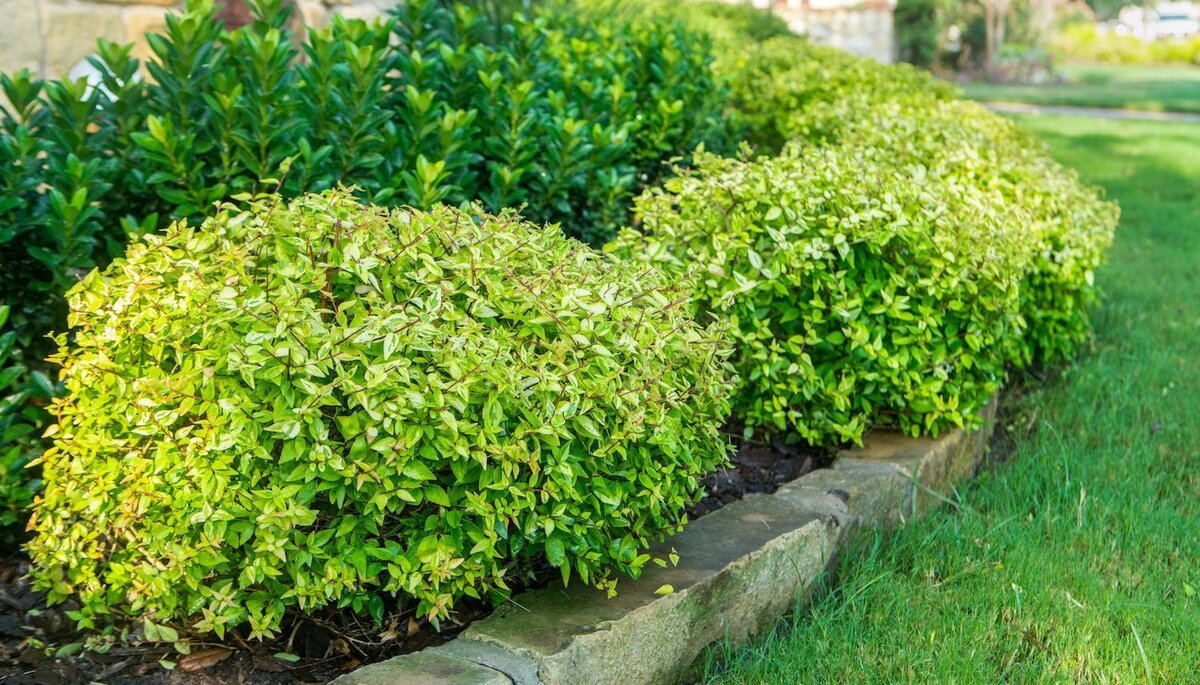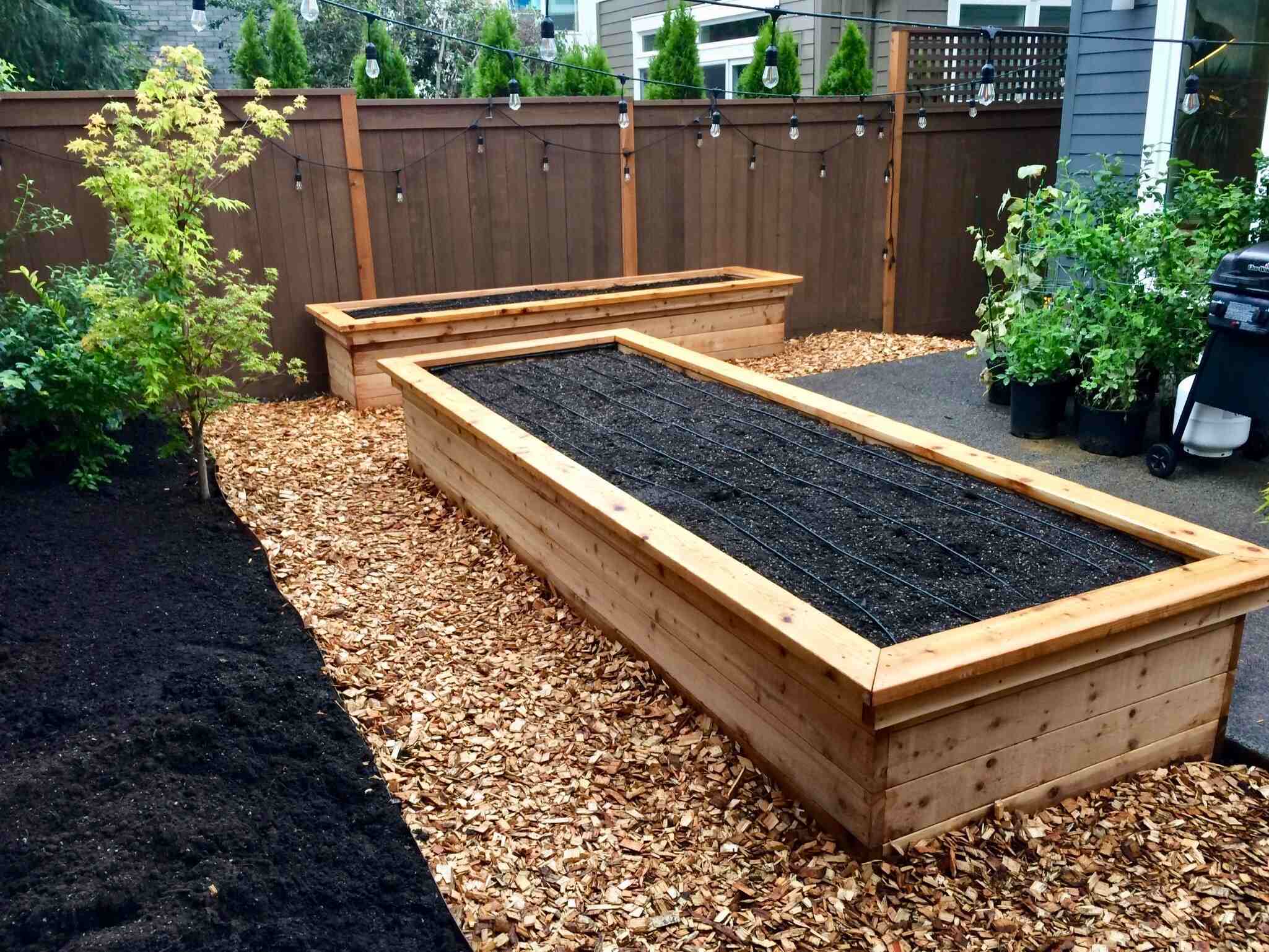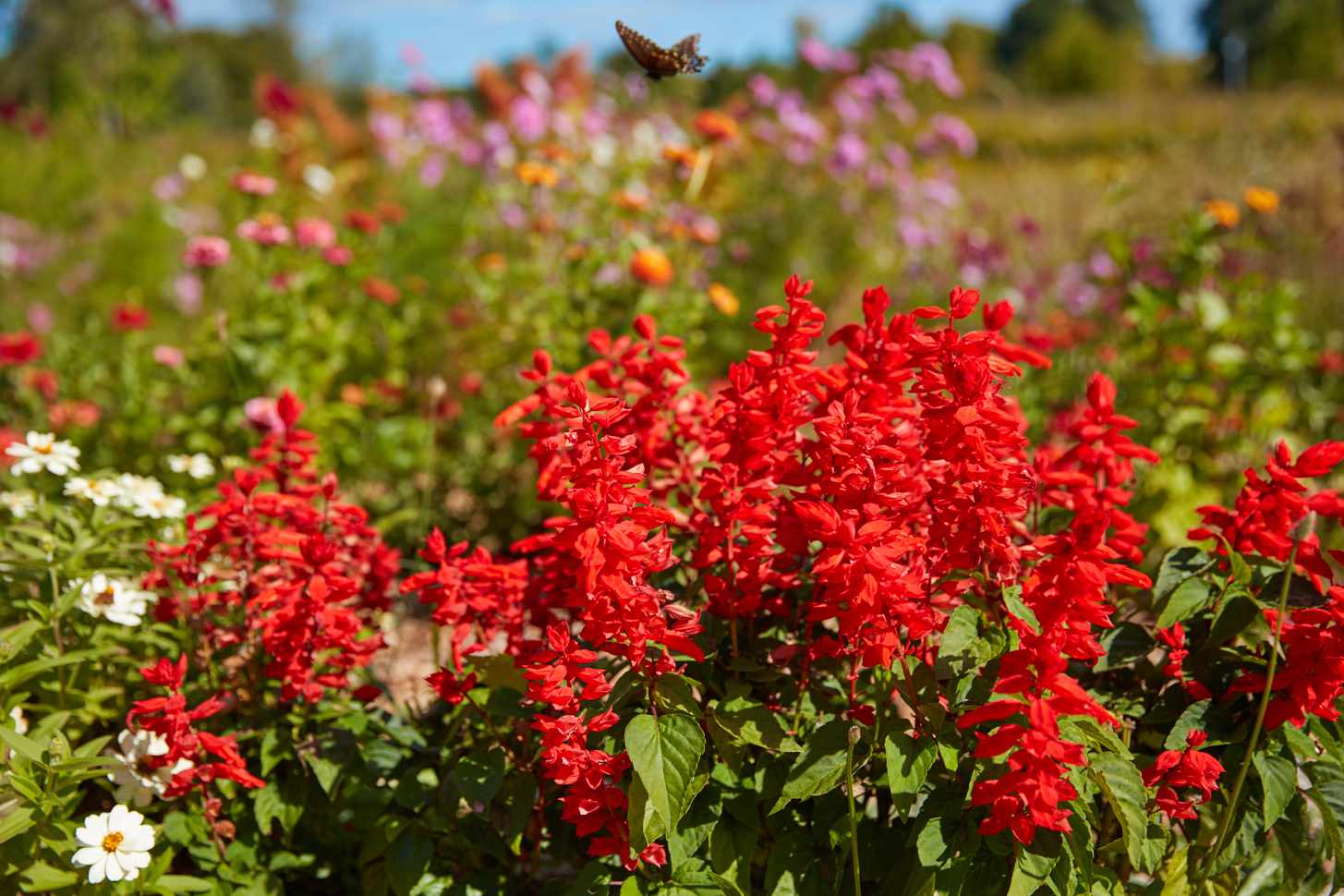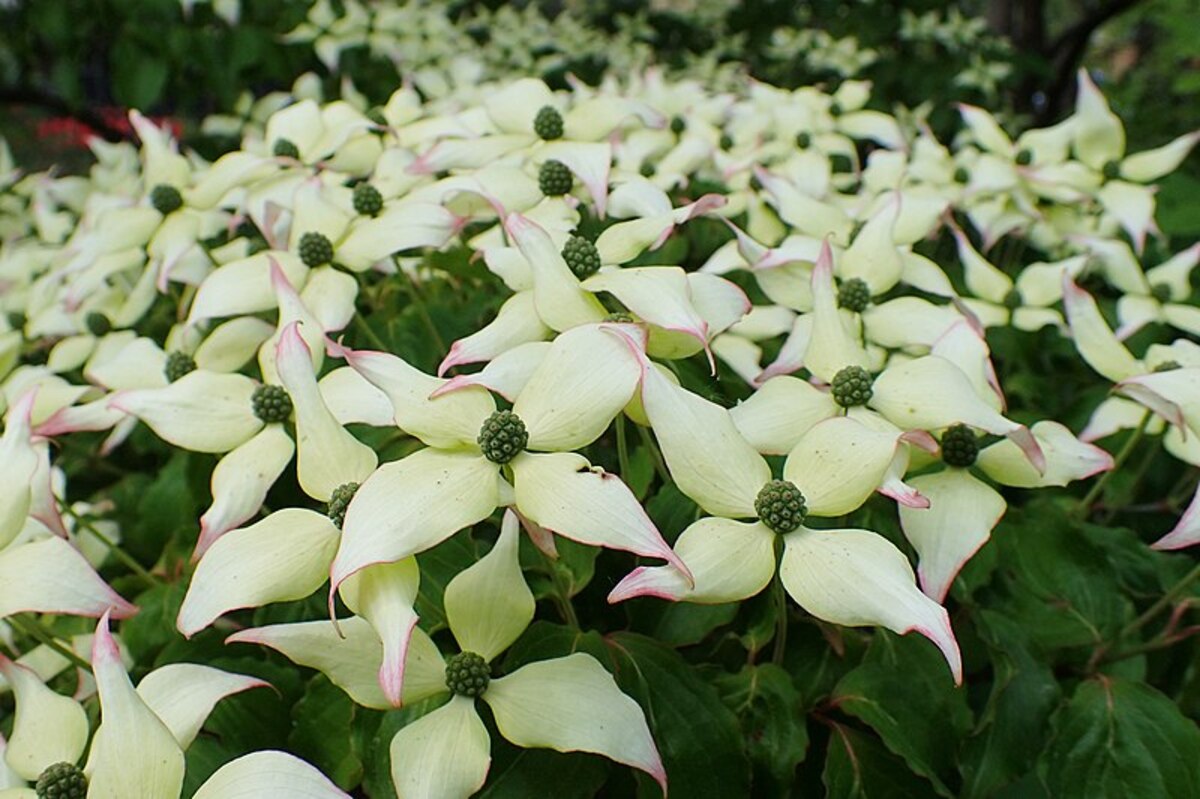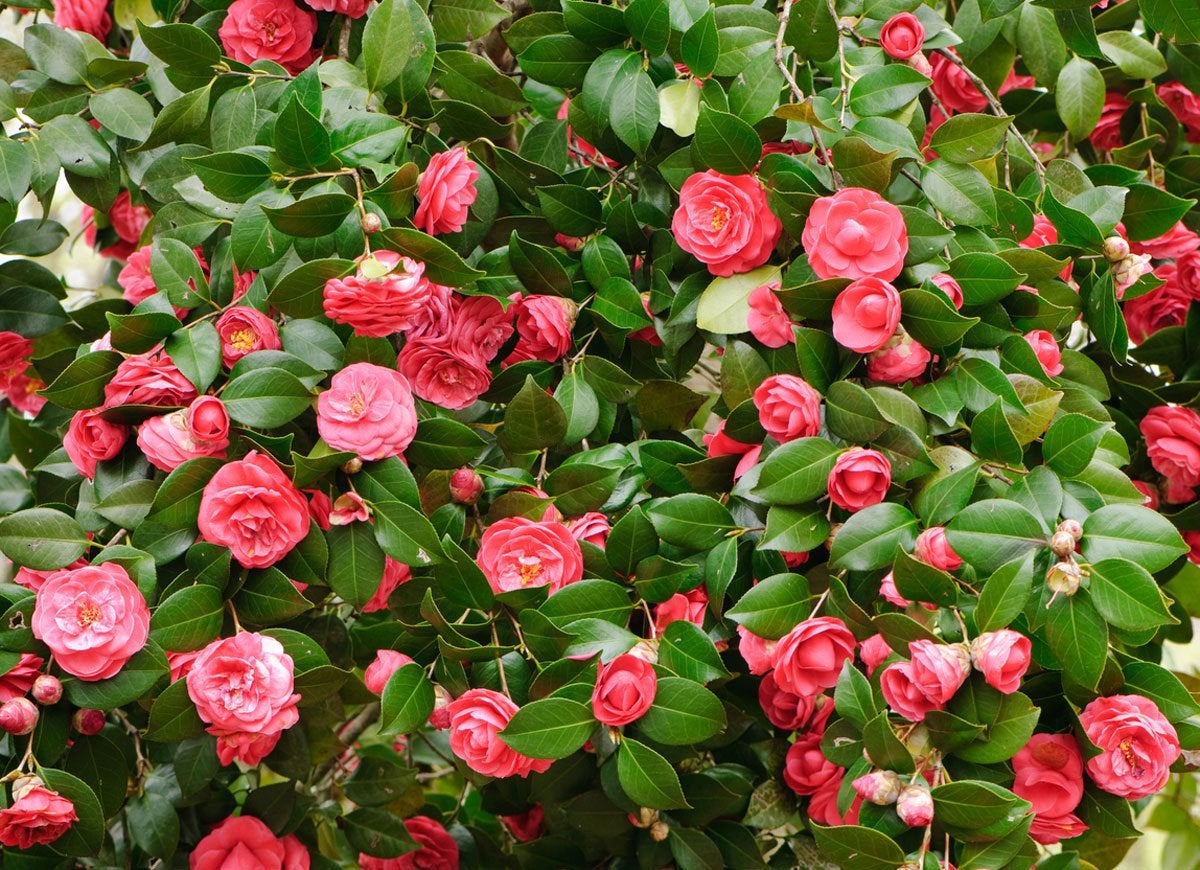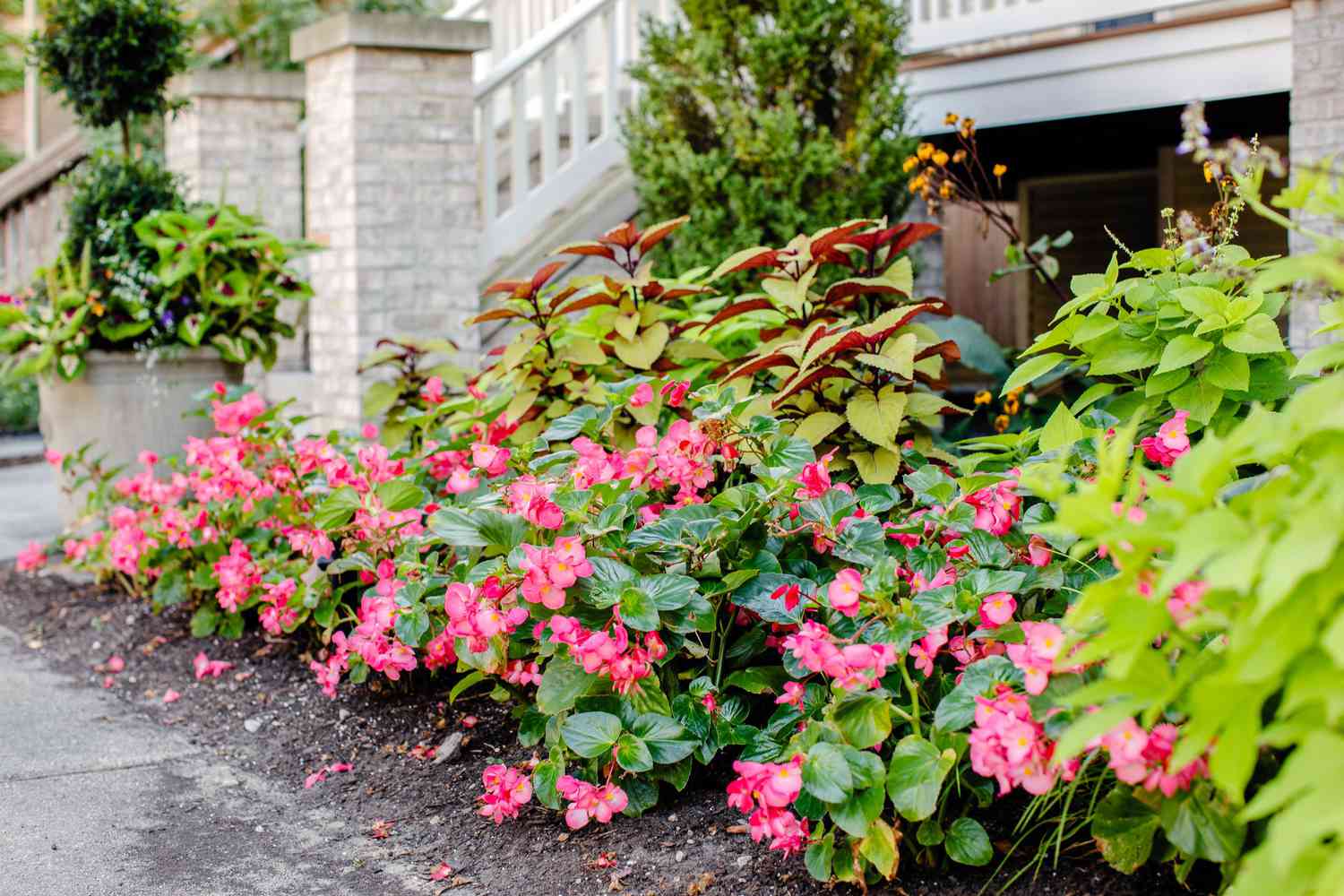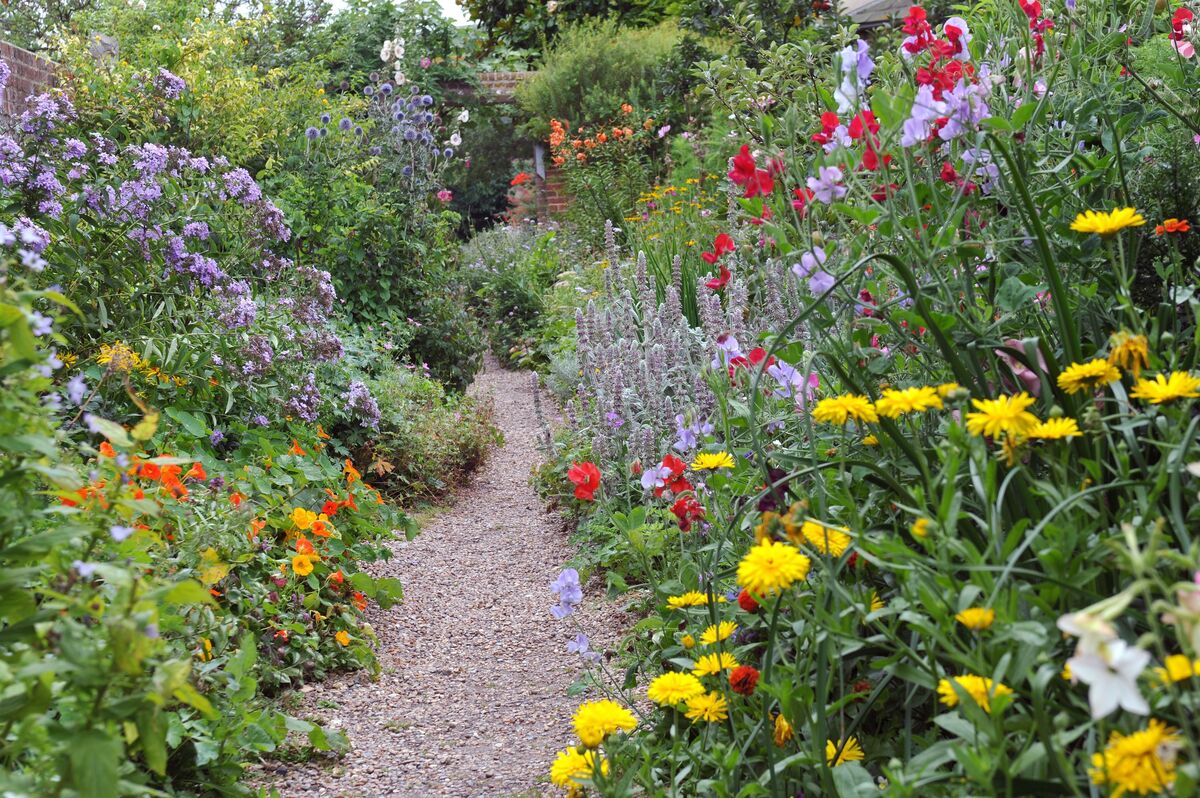Home>Gardening Techniques>Plant Care>How To Plant Shrubs On A Hillside
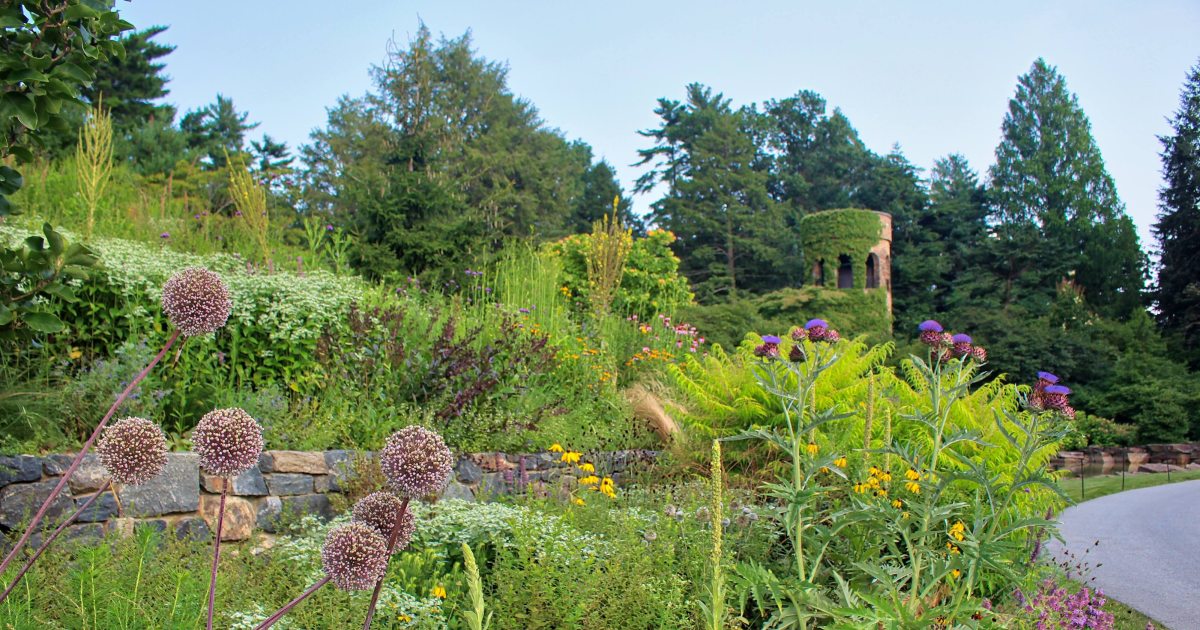

Plant Care
How To Plant Shrubs On A Hillside
Modified: February 8, 2024
Learn the best plant care techniques for planting shrubs on a hillside. Discover how to ensure successful growth and maintenance with our expert tips and advice.
(Many of the links in this article redirect to a specific reviewed product. Your purchase of these products through affiliate links helps to generate commission for Chicagolandgardening.com, at no extra cost. Learn more)
Table of Contents
Introduction
Welcome to this comprehensive guide on how to plant shrubs on a hillside. If you have a sloping landscape in your garden, you might find it challenging to figure out the best way to incorporate shrubs into the design. However, with proper planning and some gardening know-how, you can transform your hillside into a beautiful and functional space.
Planting shrubs on a hillside not only adds visual interest but also helps with erosion control. The roots of the shrubs anchor the soil, preventing it from washing away during heavy rainfall. Additionally, the foliage of the shrubs provides shade and shelter for other plants and wildlife.
Before you begin planting shrubs on your hillside, it is essential to choose the right shrubs that are suitable for the specific conditions of your slope. Factors such as soil type, sun exposure, and moisture levels should be taken into consideration. This guide will walk you through the necessary steps to ensure successful planting and long-term growth of your shrubs.
In the following sections, we’ll cover how to choose the right shrubs, prepare the hillside, create terraces or retaining walls, and properly prepare the soil before planting. We’ll also discuss the steps to follow when planting the shrubs, including mulching, watering, and ongoing maintenance. Lastly, we’ll address the issue of erosion and how to deal with it to ensure the health and stability of the hillside and your newly planted shrubs.
By the end of this guide, you’ll have the knowledge and confidence to tackle planting shrubs on a hillside, creating a stunning landscape that will thrive for years to come.
Choosing the Right Shrubs
When selecting shrubs for your hillside, it’s crucial to choose varieties that are well-suited to the specific conditions of your slope. Factors such as sun exposure, soil fertility, and moisture levels will play a significant role in determining which shrubs will thrive in your hillside garden.
Start by assessing the amount of sunlight your hillside receives. Some shrubs prefer full sun, while others thrive in partial shade. Observe the hillside throughout the day to determine the sunniest and shadiest areas. This will help you determine which shrubs will be suitable for different sections of your slope.
Soil fertility is another important consideration. Conduct a soil test to determine the pH level and nutrient content of your soil. Most shrubs prefer a slightly acidic to neutral pH (around 6.0-7.0). If your soil is too acidic or alkaline, you can amend it accordingly to create optimal growing conditions for your chosen shrubs.
Moisture levels are critical for the success of your shrubs. Take note of the water drainage on your hillside. If your slope is prone to waterlogging, choose shrubs that can tolerate wet conditions. On the other hand, if your hillside is dry and well-drained, select drought-tolerant shrubs that can withstand periods of limited water availability.
Consider the mature size of the shrubs when making your selection. It’s important to choose shrubs that won’t outgrow the space and become difficult to manage. This is especially important for a hillside garden, as larger shrubs can interfere with the stability of the slope and may require more maintenance.
When choosing shrubs, also take into account their foliage color, texture, and flowering patterns. This will help you create a visually appealing landscape with a variety of textures and colors throughout the year. Consulting with a local nursery or horticultural expert can provide valuable guidance on the best shrub varieties for your specific region and hillside conditions.
Examples of shrubs that are commonly suited for hillside planting include the Kalmia latifolia (Mountain Laurel), Juniperus horizontalis (Creeping Juniper), and Acer palmatum (Japanese Maple), among others. Each of these shrubs has unique characteristics that make them well-adapted to sloping landscapes.
Take the time to research and select the right shrubs for your hillside garden. Choosing varieties that are compatible with your slope’s conditions will set the foundation for a successful and thriving landscape.
Preparing the Hillside
Before you start planting shrubs on your hillside, it’s important to properly prepare the area to ensure successful growth and establishment. Preparing the hillside involves a few essential steps that will create a suitable environment for your shrubs to thrive.
The first step in preparing the hillside is to clear any existing vegetation or debris. Remove weeds, rocks, and any other obstructions that may impede the growth of your shrubs. This will provide a clean slate for planting and prevent competition for nutrients and water.
Next, assess the slope and evaluate its drainage patterns. If water tends to accumulate on the hillside, you may need to address drainage issues. Consider installing drainage pipes or creating channels to redirect excess water away from the planting area. Proper drainage is crucial to prevent waterlogged soil, which can hinder root development and lead to disease in the shrubs.
If your hillside is prone to erosion, it’s essential to implement erosion control measures. This can include the use of erosion control fabric or netting to stabilize the soil. Alternatively, you can create terraces or retaining walls (which we will discuss in more detail in the next section) to prevent soil erosion and provide a more level planting surface.
Before planting, it’s a good idea to amend the soil with organic matter to improve its fertility and structure. Add compost or well-rotted manure to the soil and mix it thoroughly. This will help retain moisture, promote beneficial soil organisms, and provide essential nutrients for the shrubs.
Consider installing irrigation systems or using soaker hoses on your hillside. This will ensure that your newly planted shrubs receive adequate water during the critical establishment phase. Irrigation can also make watering more convenient and efficient, especially on sloping landscapes where water runoff can be an issue.
Finally, it’s important to plan the layout of your shrubs on the hillside. Consider factors such as the mature size and growth habit of each shrub, the specific sun and shade requirements, and any aesthetic considerations. By planning ahead, you can create an organized and visually pleasing arrangement.
Once you have completed the necessary preparations, your hillside will be ready for the next step: creating terraces or retaining walls to further improve the stability and usability of the slope.
Creating Terraces or Retaining Walls
When planting shrubs on a hillside, creating terraces or retaining walls can greatly enhance the aesthetic appeal and functionality of the landscape. Terraces and retaining walls help to prevent soil erosion, provide level planting areas, and create visually pleasing garden spaces.
Terraces are horizontal platforms built into the slope, while retaining walls are vertical structures that hold back the soil. Both serve the purpose of preventing soil from washing away during heavy rainfall and provide flat areas for planting shrubs.
Before constructing terraces or retaining walls, it’s important to obtain any necessary permits and consult with local authorities to ensure compliance with building codes and regulations.
The first step in creating terraces or retaining walls is to carefully plan the layout. Consider the size and shape of the hillside, as well as the desired height and width of the structures. Determine the number of terraces or walls needed to create a visually appealing and functional design.
Next, gather the necessary materials, which can include timbers, stones, bricks, or concrete blocks. Ensure that the materials are sturdy and able to withstand the weight of the soil and the pressure exerted by the slope.
If building terraces, dig into the hillside to create level areas for planting. Use a level and a string line to ensure that each terrace is evenly aligned and sloped to allow for proper drainage. Secure the terraces by installing retaining boards or edging materials along the edges.
For retaining walls, excavate a trench along the desired wall line. Fill the trench with a solid foundation material such as gravel or crushed stone to provide stability. Stack the building materials in a staggered pattern, starting from the bottom, and use mortar or adhesive if necessary to secure them in place.
As you build the terraces or walls, periodically check for levelness and adjust as necessary to ensure stability and proper water drainage. It’s important to build with care and precision to create a structurally sound and visually appealing result.
Once the terraces or retaining walls are constructed, backfill them with soil, ensuring that it is well-compacted and evenly distributed. Consider adding additional organic matter or soil amendments to improve the fertility and structure of the soil.
With the terraces or retaining walls in place, you can now proceed to the next step of preparing the soil before planting the shrubs. This will ensure that the soil provides a nutrient-rich and conducive environment for the healthy growth of your hillside garden.
Soil Preparation
Proper soil preparation is crucial when planting shrubs on a hillside. The quality and condition of the soil directly impact the growth and health of your plants. By preparing the soil before planting, you can create a favorable environment for the roots to establish and thrive.
The first step in soil preparation is to remove any weeds, rocks, or debris from the planting area. These obstructions can hinder root growth and compete for nutrients and water. Clearing the area will give your shrubs a clean and unobstructed space to grow.
Next, it’s important to test the soil’s pH level and fertility. Soil pH affects nutrient availability, and most shrubs prefer a slightly acidic to neutral pH level (around 6.0-7.0). Conduct a soil test using a kit or send a sample to a local agricultural extension office for analysis. Based on the results, you can adjust the pH level by adding lime to raise acidity or sulfur to lower acidity.
Improving the soil’s fertility is essential for the long-term health and vigor of your shrubs. Incorporating organic matter, such as compost, well-rotted manure, or leaf mold, into the soil is an effective way to increase its nutrient content and improve its structure. Spread a layer of organic matter over the planting area and mix it into the soil to a depth of 8-10 inches.
In addition to organic matter, you can also consider adding other soil amendments based on the specific requirements of your shrubs. For example, if the soil is clayey and poorly drained, adding sand or perlite can improve drainage. Conversely, if the soil is sandy and drains too quickly, adding peat moss or vermiculite can help retain moisture.
After incorporating organic matter and amendments, rake the soil surface to create a smooth and level planting bed. Remove any large clumps or rocks that may impede the growth of the roots.
Prior to planting, it is advisable to water the prepared soil thoroughly. This will ensure that the soil is adequately moist and ready for planting. Avoid planting in excessively dry or waterlogged soil, as this can hamper root development and lead to poor plant establishment.
By taking the time to prepare the soil properly, you are setting the stage for healthy and robust shrub growth on your hillside. Nutrient-rich and well-structured soil will provide a nourishing foundation for your plants, resulting in optimal growth and vitality.
Planting Shrubs
Now that your hillside is properly prepared, it’s time to start planting shrubs. Proper planting techniques ensure that the shrubs establish well and have a strong foundation for healthy growth. Follow these steps to ensure successful planting on your hillside:
1. Digging the Hole: Dig a hole that is twice as wide and just as deep as the shrub’s root ball. The wide hole allows the roots to spread and establish more easily. Avoid digging the hole too deep, as this can cause the shrub to sink too low into the soil.
2. Loosening the Roots: Gently loosen the roots of the shrub before planting, especially if they are tightly bound. This encourages the roots to spread outward into the surrounding soil and prevents them from growing in circles.
3. Placing the Shrub: Carefully place the shrub into the hole, ensuring that it is positioned at the same depth as it was in the nursery container. The top of the root ball should be level with or slightly above the surrounding soil surface. This helps prevent the shrub from settling too deeply once the soil settles.
4. Backfilling: Begin backfilling the hole with the soil you removed, gently firming it around the roots. Be careful not to compact the soil too much, as this can restrict root growth. Fill the hole completely, ensuring that the shrub is securely anchored in place.
5. Watering: Immediately after planting, thoroughly water the shrub to settle the soil and eliminate any air pockets around the roots. Water deeply and slowly to ensure thorough penetration. Continue watering regularly during the establishment period, keeping the soil consistently moist but not waterlogged.
6. Mulching: Apply a layer of organic mulch around the base of the shrub, keeping it a few inches away from the stem. Mulching helps retain moisture, suppresses weed growth, and regulates soil temperature. Use materials such as wood chips, straw, or compost, and maintain a depth of 2-4 inches.
7. Staking (if necessary): If your shrub is tall or prone to bending, you may need to stake it for support. Use a sturdy stake and secure the shrub with garden ties or soft twine. Be sure not to tie the stake too tightly, allowing some movement for the shrub to develop strength.
8. Ongoing Care: Monitor the newly planted shrub closely during the first year. Water regularly to keep the soil evenly moist, especially during hot and dry periods. Prune as needed to shape the shrub and remove any damaged or dead branches. Provide proper fertilization based on the specific needs of the shrub.
By following these planting steps and providing proper care, your shrubs will establish well on the hillside and thrive in their new environment. With patience and ongoing maintenance, you will be rewarded with beautiful, healthy shrubs that enhance the visual appeal of your landscape.
Mulching
Mulching is a vital step in maintaining the health and vigor of your shrubs on a hillside. Mulch is a protective layer of organic or inorganic material applied around the base of the shrubs. It offers a multitude of benefits that help your plants thrive in various ways.
1. Moisture Retention: One of the primary benefits of mulching is its ability to conserve soil moisture. Mulch acts as a barrier, reducing evaporation from the soil surface. This is particularly important on a hillside where water runoff can be a concern. By retaining moisture, mulch helps ensure that the shrubs have a consistent water supply, reducing stress and promoting healthy growth.
2. Weed Suppression: Mulch acts as a natural weed suppressant. By preventing sunlight from reaching weed seeds, it inhibits their germination and growth. This reduces competition for nutrients, water, and sunlight, allowing your shrubs to thrive without the interference of invasive weeds.
3. Temperature Regulation: Mulch provides insulation to the soil, helping to regulate soil temperature. It keeps the soil cooler in the summer, reducing stress on the shrub’s roots, and warmer in the winter, protecting the roots from extreme cold. This temperature moderation promotes optimal root growth, overall plant health, and survival through changing seasons.
4. Erosion Control: On a hillside, erosion can be a significant concern. Mulching helps stabilize the soil by preventing erosion from water runoff. The layer of mulch acts as a protective cover, reducing the impact of raindrops and allowing water to infiltrate the soil slowly. This helps prevent soil erosion and ensures the shrubs remain securely anchored.
5. Nutrient Cycling: As organic mulch breaks down over time, it adds valuable organic matter to the soil. This improves soil fertility and nutrient content, providing a steady supply of nutrients to the shrubs. The decomposition of mulch also enhances soil structure, allowing for better water drainage and aeration.
When applying mulch, make sure to leave a gap around the base of each shrub to prevent the mulch from touching the main stem. This helps prevent moisture buildup and potential rotting of the stem. Maintain a mulch layer of about 2-4 inches thick, evenly spread around the shrubs, extending several inches beyond the dripline (the outer edge of the foliage).
There are various types of organic mulch to choose from, including wood chips, straw, shredded bark, and compost. Each has its characteristics and benefits. Consider using locally available materials or those that are readily accessible to you.
Regularly inspect the mulch layer and replenish it as needed, especially as it decomposes over time. This will ensure that the benefits of mulching persist and continue to support the health and growth of your hillside shrubs.
Watering and Maintenance
Proper watering and maintenance are crucial for the long-term health and vitality of your shrubs on a hillside. By providing adequate water and regular care, you can ensure that your plants thrive and continue to enhance your landscape.
Watering is particularly important, especially during the establishment phase of newly planted shrubs. While the frequency and amount of water needed will depend on factors such as rainfall, soil type, and the specific needs of each shrub species, there are general guidelines to follow:
1. Deep Watering: Water deeply to encourage the shrub’s roots to grow deeply into the soil. Shallow watering can lead to shallow roots and less stability on a hillside. Ensure that the water penetrates the root zone, which is generally concentrated within the top 6-12 inches of soil.
2. Watering Schedule: Watering requirements will vary depending on weather conditions. In general, it’s better to water deeply and less frequently rather than shallowly and frequently. This encourages the shrub’s roots to seek out water, promoting stronger root development.
3. Monitor Soil Moisture: Regularly check the moisture level of the soil by feeling the top few inches with your finger. If it feels dry, it’s time to water. However, avoid overwatering, as this can lead to root rot and other issues. Adjust your watering schedule as needed based on the conditions and needs of your plants.
In addition to watering, consistent maintenance is essential for the overall health and appearance of your shrubs:
1. Pruning: Regular pruning helps maintain the shape and size of the shrubs. Remove dead, diseased, or damaged branches as soon as you notice them. Prune in early spring or after the shrub has finished flowering, following proper pruning techniques for each specific species.
2. Fertilization: Shrub fertilization requirements vary depending on the species. Some shrubs benefit from an annual application of a balanced, slow-release fertilizer in early spring. Others may require additional feedings throughout the growing season. Consult plant-specific resources or a local gardening expert for guidance on proper fertilization practices.
3. Pest and Disease Control: Regularly inspect your shrubs for signs of pests, such as aphids or scale insects, and common diseases. Early detection and treatment can prevent the spread of pests and the damage they can cause. Use organic or appropriate chemical treatments when necessary, following the manufacturer’s instructions.
4. Mulch Maintenance: Monitor the mulch layer around your shrubs and replenish it as needed. As the mulch decomposes over time, add a fresh layer to maintain its benefits, including moisture retention and weed suppression.
By paying attention to your shrubs’ watering needs and providing regular maintenance, you can ensure that your hillside landscape remains healthy, vibrant, and visually pleasing. Regular care and attention will go a long way in preserving the beauty and longevity of your shrubs.
Dealing with Erosion
Erosion can be a significant challenge when planting shrubs on a hillside. The forces of gravity and water runoff can cause soil to wash away, leading to instability and the potential loss of planted shrubs. However, there are several strategies you can implement to combat erosion and protect your hillside garden:
1. Building Retaining Walls: Retaining walls serve as a structural barrier that holds back soil and prevents erosion. Constructing well-designed and properly installed retaining walls can provide stability and create leveled planting areas on the hillside. Use high-quality materials and ensure that the walls are built to withstand the pressure exerted by the slope.
2. Installing Erosion Control Fabric: Erosion control fabric is a geotextile material that can be placed on the hillside to stabilize the soil. It helps prevent soil erosion while allowing water to infiltrate. The fabric is placed over the planting area before adding soil and mulch, acting as a barrier against erosion caused by heavy rainfall.
3. Creating Terraces: Terracing involves creating horizontal platforms on a hillside, effectively creating steps or terraces. Each terrace helps slow down water runoff, reducing erosion and giving the water more time to infiltrate the soil. Terracing can be achieved by removing soil to create flat areas, or by constructing retaining walls to hold back the soil between each terrace.
4. Planting Groundcover: Groundcover plants, such as low-growing shrubs, grasses, or spreading perennials, can help stabilize the soil on the hillside. Their extensive root systems help bind the soil together, reducing erosion and holding the slope in place. Choose groundcover species that are well-suited to your specific growing conditions and will thrive on the hillside.
5. Contouring the Slope: Contouring involves creating gentle, curved slopes across the hillside to slow down water runoff. This can be done by gentle grading or shaping the hillside to follow the contours of the land. By redirecting water flow, contouring helps prevent erosion and allows for better water infiltration.
6. Improving Drainage: Proper drainage is essential in preventing erosion. Install drainage pipes or channels to redirect excess water away from the planting area, preventing waterlogging and soil saturation. This helps maintain soil stability and reduces the risk of erosion from excessive water runoff.
7. Proper Mulching: Adding a layer of organic mulch around your shrubs helps protect the soil from erosion caused by heavy rainfall. Mulch acts as a protective barrier, reducing the impact of raindrops and minimizing soil splashing. It also promotes water infiltration and helps maintain soil moisture.
Implementing these erosion control techniques will help maintain the stability and health of your hillside garden. It’s important to evaluate the specific conditions of your slope and choose the most appropriate erosion control strategies for your situation. By taking proactive measures, you can preserve the integrity of the hillside and allow your planted shrubs to thrive for years to come.
Conclusion
Planting shrubs on a hillside can be a rewarding endeavor that adds beauty, functionality, and erosion control to your landscape. By following the proper steps and implementing the strategies outlined in this guide, you can create a thriving hillside garden that will flourish for years to come.
Choosing the right shrubs is the first essential step. Consider the specific conditions of your hillside, such as sun exposure, soil fertility, and moisture levels. Select shrub varieties that are well-suited to these conditions to ensure successful growth and establishment.
Preparing the hillside is crucial for creating a stable and suitable environment for your shrubs. Clear the area of vegetation and debris, address any drainage or erosion issues, and amend the soil with organic matter to improve its fertility and structure.
Creating terraces or retaining walls helps prevent soil erosion, provides level planting surfaces, and enhances the aesthetic appeal of your hillside. Carefully plan the layout and choose sturdy materials to construct these structures.
Soil preparation is essential to provide the shrubs with a nutrient-rich and well-draining medium. Remove weeds, rocks, and debris, test and amend the soil’s pH and fertility, and incorporate organic matter for optimal conditions.
When planting shrubs, ensure proper digging and placement, loosening of the roots, and backfilling to provide the shrubs with a strong foundation. Water thoroughly after planting and maintain a regular watering schedule, adapting to the specific needs of your plants.
Mulching is a crucial step to help retain moisture, suppress weeds, regulate soil temperature, and prevent erosion. Apply a layer of organic mulch around the base of the shrubs, replenishing it as needed.
Finally, ongoing maintenance, including pruning, fertilizing, pest control, and regular inspections, ensures the health and longevity of your hillside shrubs. Stay vigilant and address any issues promptly to maintain optimal growth and appearance.
By incorporating these steps and techniques, you can overcome the challenges of planting shrubs on a hillside. With patience, care, and a thoughtful approach, your hillside garden will thrive and become a source of beauty and tranquility in your outdoor space.
